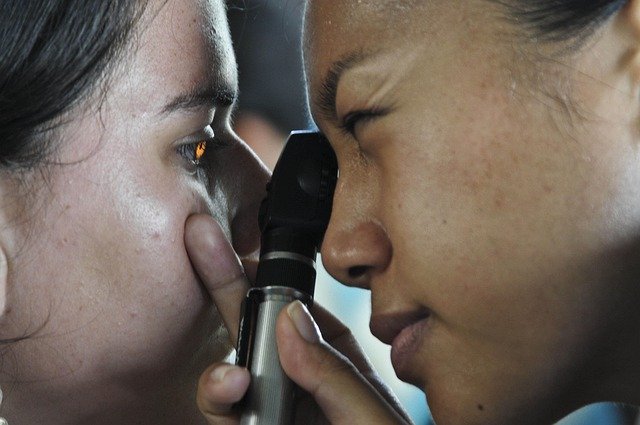Recognizing HIV: Subtle Signs That May Point to Early Infection
HIV often develops quietly, with early symptoms so mild they’re easily overlooked or mistaken for common illnesses. Yet this is when the virus is most contagious and when timely detection matters most. HIV targets the immune system, and without treatment, it gradually erodes the body’s defenses. Being aware of the earliest red flags can lead to early diagnosis, access to antiretroviral therapy, and a healthier, longer life.

What Early Symptoms Are Commonly Missed in HIV Infection?
The earliest stage of HIV infection, called acute HIV syndrome, occurs 2-4 weeks after exposure. Many people experience flu-like symptoms that are easily dismissed as seasonal illness. These commonly missed signs include mild headaches, swollen lymph nodes, and general malaise that comes and goes. Night sweats may occur sporadically, leading many to attribute them to room temperature or stress rather than infection.
Muscle aches and joint pain are frequently overlooked because they mirror symptoms of overexertion or minor viral infections. A sore throat without other cold symptoms can be another subtle indicator. These symptoms typically last 1-2 weeks and may be so mild that some people don’t notice them at all, making early detection challenging but crucial for effective treatment.
How Does HIV Cause Persistent Fatigue and Low-Grade Fever?
HIV attacks CD4+ T cells, which are essential components of the immune system. As the virus replicates rapidly during early infection, the body’s immune response becomes overactive, leading to chronic inflammation. This inflammatory process consumes significant energy, resulting in persistent fatigue that doesn’t improve with rest or sleep.
Low-grade fever occurs as the immune system attempts to fight the infection. Unlike typical fevers that spike and break, HIV-related fever tends to be subtle and ongoing, often registering between 99-101°F. The combination of immune system activation and viral replication creates a constant state of physiological stress, explaining why individuals may feel consistently tired and slightly feverish for weeks or months during early infection.
Why Is Monitoring for Mouth Ulcers and Skin Rashes Important?
The mouth and skin serve as early warning systems for HIV infection because they contain high concentrations of immune cells. Mouth ulcers, particularly those that appear suddenly or heal slowly, can indicate immune system compromise. These ulcers may be painless initially but can become increasingly problematic as the infection progresses.
Skin rashes associated with early HIV often appear as small, red, slightly raised bumps on the chest, back, or arms. The rash may be itchy or asymptomatic and can last several days to weeks. Both mouth ulcers and skin manifestations occur because HIV disrupts normal immune surveillance, allowing opportunistic bacteria and fungi to flourish in areas they typically wouldn’t affect in healthy individuals.
How Can Recurring Colds or Infections Indicate Immune Suppression?
One of the most telling signs of HIV progression is an increased frequency of common infections. While healthy adults typically experience 2-3 colds per year, those with untreated HIV may find themselves battling respiratory infections monthly or even more frequently. These infections often last longer than usual and may be more severe than expected.
Recurring yeast infections, particularly in women, can signal immune system weakness. Similarly, frequent episodes of oral thrush, unusual bacterial infections, or slow-healing wounds indicate that the immune system is struggling to maintain normal defensive functions. The pattern of recurring infections is often more significant than any single episode, making it important to track frequency and severity over time.
What Role Does Early Treatment Play in Preventing AIDS Progression?
Early antiretroviral therapy (ART) represents one of modern medicine’s greatest success stories. When started during acute infection, ART can reduce viral load to undetectable levels within months, allowing the immune system to recover significantly. This early intervention prevents the progression to AIDS, which is defined by a CD4+ cell count below 200 cells per microliter or the presence of specific opportunistic infections.
Studies consistently show that individuals who begin treatment early maintain higher CD4+ cell counts and have dramatically better long-term outcomes. Early treatment also reduces transmission risk to nearly zero when viral suppression is achieved. The phrase “undetectable equals untransmittable” reflects this reality, emphasizing how early detection and treatment protect both individual health and public health.
HIV Testing and Treatment Costs Overview
Understanding the financial aspects of HIV testing and treatment can help individuals make informed healthcare decisions. Costs vary significantly based on insurance coverage, location, and healthcare provider.
| Service Type | Provider/Location | Estimated Cost Range |
|---|---|---|
| HIV Testing | Planned Parenthood | $50-$200 (often free) |
| HIV Testing | Local Health Department | Free-$50 |
| HIV Testing | Private Lab (Quest/LabCorp) | $100-$300 |
| Initial HIV Treatment | Community Health Centers | $200-$500/month |
| Initial HIV Treatment | Private Healthcare | $1,000-$3,000/month |
| Initial HIV Treatment | With Insurance Coverage | $20-$100/month |
Prices, rates, or cost estimates mentioned in this article are based on the latest available information but may change over time. Independent research is advised before making financial decisions.
Early recognition of HIV symptoms can be life-changing, transforming what was once a fatal diagnosis into a manageable chronic condition. The subtle nature of early HIV symptoms means that awareness and proactive testing remain crucial tools in combating the epidemic. Healthcare providers emphasize that anyone who suspects possible exposure should seek testing regardless of symptom presence, as early detection and treatment provide the best outcomes for long-term health and quality of life.
This article is for informational purposes only and should not be considered medical advice. Please consult a qualified healthcare professional for personalized guidance and treatment.




